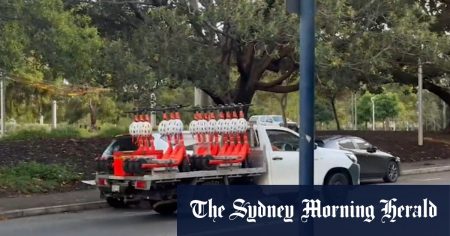The recent spate of unidentified drone sightings over New Jersey has sparked considerable public concern and ignited a debate over the appropriate response. Former FBI agent Rob D’Amico, ex-chief of the FBI’s counter-drone unit, strongly criticized former President Donald Trump’s suggestion to shoot down the drones, labeling it “irresponsible” and legally equivalent to firing upon a manned aircraft. This stark assessment underscores the complex legal and safety implications surrounding the unauthorized use of drones in U.S. airspace. D’Amico’s statement highlights the potential for unintended consequences and emphasizes the need for a measured, informed approach to addressing the drone phenomenon.
The core of the controversy revolves around the unknown nature of the drones and their purpose. While the FBI and Department of Homeland Security (DHS) have jointly stated that the sightings pose no immediate national security or public safety threat, this assurance has done little to quell anxieties. The lack of transparency surrounding the drones, coupled with their persistent presence, has fueled speculation and a growing demand for answers. This information vacuum has allowed various theories to proliferate, ranging from benign explanations like hobbyist drone activity to more sinister possibilities involving foreign actors or malicious intent. The public’s unease is further exacerbated by the limited authority of local officials to address the situation, highlighting a gap in jurisdictional responsibility regarding airborne threats.
D’Amico’s emphatic condemnation of Trump’s shoot-down suggestion stems from both legal and practical concerns. Legally, discharging a firearm at a drone carries the same weight as firing upon a manned aircraft, potentially leading to severe criminal charges. From a practical standpoint, indiscriminately shooting at drones presents a significant safety risk, especially in populated areas. Falling debris from a downed drone could cause property damage or injury, and the act itself could create panic and further confusion. Moreover, the effectiveness of shooting down small, fast-moving drones is questionable, making it a potentially futile and dangerous exercise.
The drone sightings have elicited a range of reactions from lawmakers and experts. While some, like Governor Kathy Hochul of New York, have focused on deploying advanced drone detection systems, others have expressed deeper suspicions. Congresswoman Marjorie Taylor Greene, for example, has suggested a government cover-up, aligning with the sentiment expressed by some members of the public who believe the government is withholding crucial information. This distrust is echoed by experts like Vijay Kumar, an engineering professor specializing in drones, who finds it improbable that the U.S. government is unaware of the drones’ origins and purpose. This divergence of opinions underscores the prevailing uncertainty and the need for a comprehensive investigation to determine the facts.
The increasing pressure on federal and state agencies to provide concrete answers reflects the growing public concern over the drone sightings. The lack of definitive information has fueled speculation about the potential threats these drones could pose, ranging from surveillance and espionage to more disruptive scenarios. The demand for transparency and accountability is likely to intensify in the coming weeks as lawmakers and the public seek to understand the nature of these airborne intrusions and their implications for national security. This pressure could lead to increased scrutiny of existing drone regulations and the development of new protocols for dealing with unidentified aerial phenomena.
The ongoing drone saga underscores a critical gap in current legal and regulatory frameworks regarding unmanned aerial vehicles. While regulations exist for commercial and recreational drone use, the response to unidentified or potentially malicious drones remains unclear. The New Jersey incident highlights the need for a comprehensive national strategy to address these challenges, including improved detection capabilities, clear jurisdictional responsibilities, and protocols for interagency cooperation. This incident could serve as a catalyst for developing a more robust and adaptable approach to managing the evolving drone landscape and mitigating the risks they pose to public safety and national security. Furthermore, fostering international collaboration on drone regulations and security protocols could become increasingly important as drone technology continues to advance and its potential uses expand.










